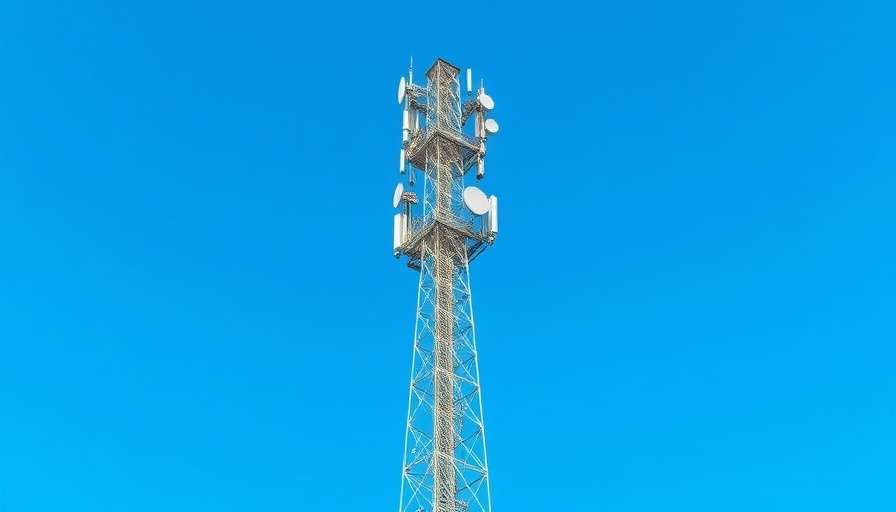
Understanding Cellular Internet: An Overview
In today's fast-paced digital world, having reliable internet access is essential, especially for households juggling remote work, online schooling, and streaming services. Cellular home internet, often known as fixed wireless, offers a compelling alternative to traditional cable and fiber internet services. As Americans face economic challenges and seek cost-effective solutions, the rise of cellular internet presents both advantages and considerations that homeowners should weigh before making a decision.
How Cellular Internet Functions
Cellular internet operates by connecting a dedicated device to nearby cell towers, similar to how smartphones access mobile data. This device, effectively a combination of a modem and router, is typically installed at no additional charge by service providers. Unlike cable or fiber options, there’s no need for physical infrastructure like cables or fiber optics. This makes cellular internet not only accessible but also quicker to set up, particularly in areas lacking traditional broadband services.
Cost-Effectiveness and Accessibility
One of the standout features of cellular internet is its affordability. Monthly costs generally range from $50 to $70, making it a competitive choice compared to cable and fiber, which can soar up to $110 monthly. With the high saturation of fixed wireless plans, carriers often introduce promotions, locking prices for new customers and making it an attractive option in an inflation-sensitive economy.
Speed and Reliability: A Balanced Perspective
While cellular internet makes a strong case for affordability and quick deployment, it does come with its limitations. Top speeds can reach around 1 Gbps, but most users experience speeds between 50 and 400 Mbps. This is generally sufficient for standard household needs—streaming video, online gaming, and browsing. However, it’s essential to note that during peak usage times, service might lag since these plans are often deprioritized on busy cell networks.
Current Providers: What to Expect
Several key players dominate the cellular internet market, including T-Mobile and Verizon, each offering services that cater to various customer needs. T-Mobile’s 5G Home Internet provides speeds up to 415 Mbps for a monthly fee of $50 to $70, while Verizon offers a similar price for its competitive range. With the transition to 5G, these providers are continuously enhancing their service quality, reflecting a trend toward faster, more reliable connections.
Should You Switch? Weighing the Pros and Cons
Like any major home decision, switching to cellular internet requires a thorough assessment of your specific needs. Here are some pros and cons to consider:
-
Pros:
- Cost-Effective: Reduced monthly fees and potential bundled service discounts are major draws for economic-minded consumers.
- Rural Accessibility: Cellular internet is ideally suited for rural households, bridging the digital gap where traditional services fall short.
- Quick Setup: Installation is often streamlined, allowing users to get connected promptly without extensive delays.
-
Cons:
- Variable Speeds: Customers may find themselves with slower speeds during peak hours, affecting the overall user experience.
- Data Deprioritization: Expect potential reductions in service quality during busy periods, which could inhibit functionality during critical online tasks.
Best Practices for Maximizing Cellular Internet Performance
Understanding how to maximize your cellular internet experience can lead to a more satisfying outcome. Consider positioning your gateway device near windows for optimal signal reception and minimizing interference from walls or electronics. Regularly testing your internet speed can help you monitor fluctuations and address potential service provider issues as they arise.
Final Thoughts: Is Cellular Internet Right For Your Home?
As you evaluate the options available to you in the vast world of home internet services, cellular internet presents a viable, cost-effective solution, especially for those in areas where traditional methods fall short. By weighing the pros and cons and understanding the intricacies of this technology, homeowners can make informed decisions. For anyone considering this route, understanding the basics can ensure not only a smooth transition but also long-term satisfaction with your internet service.
Whether you’re a DIY enthusiast or just looking to optimize your home’s connectivity and efficiency, the future is bright with the possibilities that cellular internet brings. For more handyman tips and expert insight into home maintenance and repairs, stay informed with updated resources and articles that guide you on your DIY journey.
 Add Row
Add Row  Add
Add 



Write A Comment